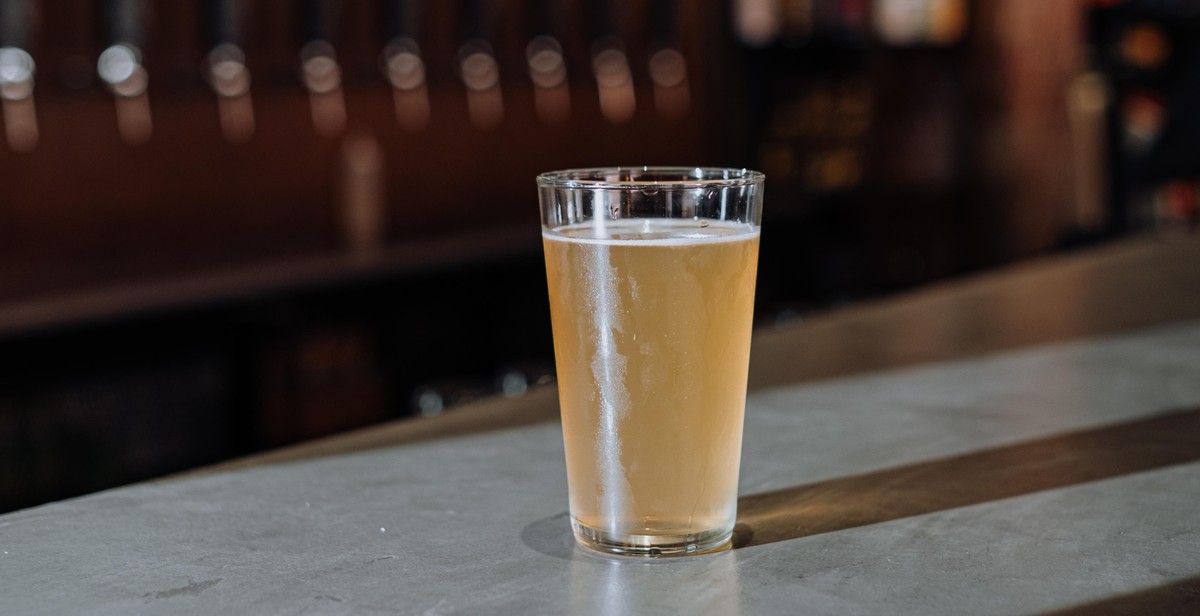How to Brew Beer with Locally Sourced Ingredients: Embracing the Terroir
Beer is one of the most popular alcoholic beverages in the world, with a rich history dating back thousands of years. While most beers are made using a combination of malted grains, hops, yeast and water, the use of locally sourced ingredients is becoming increasingly popular among brewers.
Why Use Locally Sourced Ingredients?
The use of locally sourced ingredients has numerous benefits, both for the environment and for the quality of the beer itself. Firstly, sourcing ingredients locally reduces the carbon footprint of the brewing process, as transportation is minimized. This is particularly important for small-scale brewers, who may not have access to the same transportation networks as larger breweries.
Secondly, locally sourced ingredients can add a unique flavor profile to the beer, as they are influenced by the local climate, soil and water. This is known as terroir, and is commonly associated with wine production. By using locally sourced ingredients, brewers can create beers that have a distinct sense of place, reflecting the region in which they were produced.
In this article, we will explore the benefits of using locally sourced ingredients in beer production, and provide a step-by-step guide to brewing beer with locally sourced ingredients.

Understanding Terroir
Terroir is a French term that refers to the environmental factors that affect the taste and quality of a crop. These factors include soil type, climate, topography, and even the cultural practices of the people who grow the crop. Although terroir is most commonly associated with wine, it also plays an important role in the brewing of beer.
What is Terroir?
Terroir is a complex concept that encompasses a wide range of environmental and cultural factors. For beer brewing, terroir refers to the unique characteristics of the local environment that influence the flavor, aroma, and character of the beer. This includes the soil type, climate, and geography of the region, as well as the specific varieties of hops and barley that are grown there.
How Terroir Affects Beer Brewing
The terroir of a region can have a significant impact on the flavor and character of the beer that is brewed there. For example, hops grown in a cool, damp climate will typically have a more delicate and floral flavor than those grown in a hot, dry climate. Similarly, barley grown in soil that is rich in minerals and nutrients will produce a fuller, more complex flavor in the finished beer.
By embracing the terroir of their local region, brewers can create unique and distinctive beers that reflect the character and flavor of the area. This can help to create a sense of place and identity for the beer, and can also provide a marketing advantage for small, local breweries.
Overall, understanding terroir is an important part of brewing beer with locally sourced ingredients. By taking into account the unique environmental and cultural factors of their region, brewers can create beers that are truly unique and reflective of their local terroir.

Selecting Locally Sourced Ingredients
Brewing beer with locally sourced ingredients is not only a great way to support your local economy, but it also adds a unique flavor profile to your brews. Here are some tips for selecting the right locally sourced ingredients:
Choosing the Right Grains
The grains used in brewing beer are responsible for the color, flavor, and body of the beer. When selecting locally sourced grains, it’s important to consider the climate and soil conditions of the region. For example, if you’re brewing in an area with a lot of rainfall, you may want to select grains that are more resistant to mold and mildew. Similarly, if you’re brewing in an area with a lot of sun, you may want to select grains that are more tolerant of heat and drought.
Some popular locally sourced grains include barley, wheat, and rye. These grains can be sourced from local farms or malt houses and can add a unique flavor profile to your beer.
Selecting Local Hops
Hops are responsible for the bitterness and aroma of beer. Local hops can add a unique flavor and aroma to your brews. When selecting local hops, it’s important to consider the variety and the alpha acid content. Different hop varieties have different flavor and aroma profiles, so it’s important to select the right variety for your brew. Similarly, the alpha acid content will affect the bitterness of your beer, so it’s important to select hops with the right alpha acid content for your recipe.
Some popular locally sourced hop varieties include Cascade, Centennial, and Chinook. These hops can be sourced from local hop farms or even grown in your own backyard.
Using Local Yeast
Yeast is responsible for converting the sugars in the grains into alcohol. Local yeast can add a unique flavor profile to your beer. When selecting local yeast, it’s important to consider the strain and the fermentation temperature. Different yeast strains have different flavor profiles, so it’s important to select the right strain for your recipe. Similarly, the fermentation temperature will affect the flavor of your beer, so it’s important to select a yeast strain that is appropriate for the temperature at which you’ll be fermenting.
Some popular locally sourced yeast strains include American Ale, Belgian Saison, and German Hefeweizen. These strains can be sourced from local homebrew shops or even harvested from the air in your region.

Brewing with Local Ingredients
Brewing beer with locally sourced ingredients is a great way to embrace the terroir of your region and create unique and delicious brews. Here are some tips on how to brew with local ingredients:
Mashing and Boiling
The first step in brewing with local ingredients is to select the right grains and hops. Look for local farmers who grow barley, wheat, and other grains that can be malted for brewing. You can also use locally grown hops or other herbs and spices to add flavor and aroma to your beer.
When mashing and boiling your ingredients, it’s important to pay attention to the water you use. Depending on where you live, your local water source may have different mineral content that can affect the flavor and character of your beer. Consider testing your water and adjusting it as needed to achieve the desired results.
Fermentation and Conditioning
Once your wort is boiled and cooled, it’s time to add yeast and start the fermentation process. You can use locally sourced yeast strains or even wild yeasts that are present in your region. This can add unique flavors and complexity to your beer.
During fermentation, it’s important to control the temperature and monitor the progress of the yeast. Be patient and give the yeast enough time to do its job properly. After fermentation is complete, you can condition your beer for several weeks to allow the flavors to mature and mellow.
Bottling and Carbonation
When it’s time to bottle your beer, consider using locally sourced bottles and caps. This can add a personal touch to your brews and help support local businesses. You can also use locally sourced sugars or honey to carbonate your beer naturally.
Be sure to follow proper sanitation procedures when bottling and carbonating your beer to avoid contamination. Once your beer is carbonated, store it in a cool place and enjoy!

Tasting and Enjoying Local Beer
After brewing your beer with locally sourced ingredients, it’s time to taste and enjoy the fruits of your labor. Here are some tips on how to properly taste and appreciate local beer:
Tasting Notes
When tasting local beer, it’s important to pay attention to the following tasting notes:
- Appearance: Observe the color, clarity, and head of the beer.
- Aroma: Take a whiff of the beer and identify any aromas such as hops, malt, or fruit.
- Flavor: Sip the beer and identify the different flavors such as sweetness, bitterness, or acidity.
- Mouthfeel: Pay attention to the texture and body of the beer.
- Finish: Notice the aftertaste and how long it lingers.
By paying attention to these tasting notes, you can better appreciate the complexity and nuances of the beer you’ve brewed.
Food Pairings
Local beer can be a great accompaniment to food. Here are some food pairings to consider:
| Beer Type | Food Pairing |
|---|---|
| Pale Ale | Spicy foods such as Thai or Indian cuisine |
| Stout | Rich, hearty dishes such as stews or roasted meats |
| Wheat Beer | Lighter fare such as salads or seafood |
| IPA | Grilled or smoked meats such as burgers or ribs |
Experiment with different food pairings to find the perfect match for your local beer. Cheers!

Conclusion
Brewing beer with locally sourced ingredients is a great way to embrace the terroir and support local farmers and businesses. It allows you to create unique and flavorful beers that reflect the character of your region and showcase its agricultural bounty.
By following the steps outlined in this article, you can easily brew your own beer using ingredients sourced from your local area. Start by researching the ingredients that are available in your region and experimenting with different combinations to create the perfect recipe.
Remember to consider factors such as the flavor profile, aroma, and texture of each ingredient, as well as their compatibility with different beer styles. You can also try using different brewing techniques and equipment to further enhance the flavor and character of your beer.
Brewing beer with locally sourced ingredients is not only a fun and rewarding hobby, but it also supports sustainable agriculture and helps to reduce your carbon footprint. So why not give it a try and see what unique and delicious beers you can create?
- Start by researching local ingredients and experimenting with different combinations
- Consider the flavor profile, aroma, and texture of each ingredient and their compatibility with different beer styles
- Try using different brewing techniques and equipment to enhance the flavor and character of your beer
- Brewing beer with locally sourced ingredients supports sustainable agriculture and helps to reduce your carbon footprint
So raise a glass to the terroir and the unique flavors of your local region. Happy brewing!
